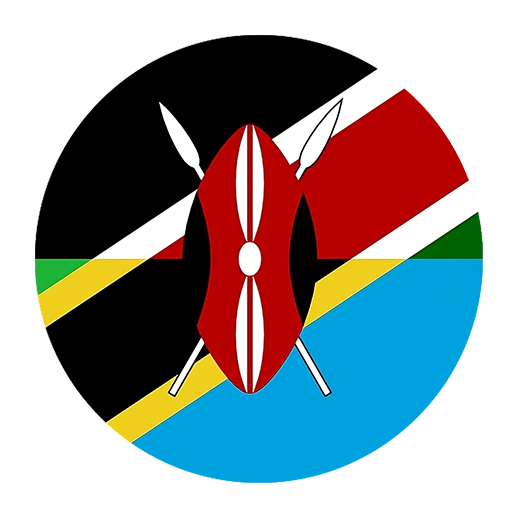Swahili, a Bantu language spoken by millions across East Africa, is not only rich in cultural history but also in culinary delights. One of the most enjoyable ways to dive into a new language is by exploring its food vocabulary. In this article, we will delve into the world of Swahili desserts and sweets, uncovering the terminology that will sweeten your linguistic journey. Whether you’re a language enthusiast, a culinary explorer, or both, this exploration will add a delightful twist to your Swahili learning experience.
Understanding Swahili Dessert Culture
Swahili cuisine is a tapestry woven from diverse influences, including African, Arab, Indian, and European elements. This cultural fusion is particularly evident in Swahili desserts, which often combine exotic spices, tropical fruits, and traditional techniques. Understanding the terminology associated with these desserts is not just about learning new words; it’s about appreciating the cultural significance behind them.
Basic Dessert Terminology
Before diving into specific desserts, it’s essential to get familiar with some basic Swahili terms related to sweets and desserts.
– **Tamu**: This word means sweet. It’s a fundamental adjective you’ll hear often in the context of desserts.
– **Kitindamlo**: Literally translated, this means dessert or after-meal treat.
– **Sukari**: The Swahili term for sugar, a crucial ingredient in many desserts.
– **Maziwa**: This means milk, another staple in various sweet recipes.
– **Siagi**: The word for butter, often used in baking and cooking desserts.
Popular Swahili Desserts and Their Terminology
Now that we have covered some basics, let’s delve into some of the most popular Swahili desserts and the specific terminology associated with them.
1. Mahamri
Mahamri are delicious, triangular-shaped doughnuts that are a staple in Swahili cuisine. They are often enjoyed with tea and are particularly popular during breakfast.
– **Unga**: This is the Swahili word for flour, the primary ingredient in Mahamri.
– **Hamira**: This means yeast, used to make the dough rise.
– **Tui la nazi**: This term refers to coconut milk, which adds a rich flavor to Mahamri.
– **Kardamomu**: The Swahili word for cardamom, a spice that gives Mahamri its distinctive taste.
2. Kashata
Kashata is a type of sweet snack made from coconut, sugar, and sometimes peanuts. It’s similar to a brittle or fudge and is a common treat at special occasions.
– **Nazi**: The word for coconut, the main ingredient in Kashata.
– **Karanga**: This term means peanuts, which are sometimes added to the mixture.
– **Jibini la nazi**: This translates to coconut cream, used in some Kashata recipes for additional richness.
– **Mafuta**: This means oil, used to bind the ingredients together.
3. Mandazi
Mandazi are deep-fried doughnuts similar to Mahamri but often simpler in flavor. They are fluffy on the inside and slightly crispy on the outside, making them a beloved snack.
– **Maji**: This means water, a basic but essential ingredient in Mandazi dough.
– **Sukari ya kahawia**: The term for brown sugar, sometimes used to sweeten the dough.
– **Hiliki**: The Swahili word for cardamom, occasionally used to add flavor to Mandazi.
– **Chumvi**: This means salt, used in small quantities to balance the sweetness.
4. Vitumbua
Vitumbua are rice flour pancakes that are crispy on the outside and soft on the inside. They are often enjoyed as a breakfast treat or a dessert.
– **Mchele**: The Swahili word for rice, the primary ingredient in Vitumbua.
– **Maziwa ya nazi**: This translates to coconut milk, which adds flavor and moisture to the batter.
– **Mafuta ya kupikia**: This term means cooking oil, used for frying the pancakes.
– **Mayai**: The word for eggs, which help bind the ingredients together.
5. Halua
Halua, also known as Halwa, is a dense, sweet confection made from flour, sugar, and ghee. It has a rich, sticky texture and is often flavored with spices and nuts.
– **Semolina**: This is the primary ingredient in some types of Halua, and it’s also called semolina in Swahili.
– **Ghee**: Known as samin in Swahili, this is clarified butter that gives Halua its rich texture.
– **Sukari ya unga**: This means powdered sugar, often used in making Halua.
– **Mdalasini**: The Swahili word for cinnamon, a common flavoring in Halua.
Exploring Regional Variations
Swahili desserts can vary significantly from one region to another, reflecting local ingredients and culinary traditions. For instance, in Zanzibar, you might find desserts that incorporate cloves and other spices, reflecting the island’s history as a spice trading hub. Meanwhile, on the mainland, desserts might lean more heavily on ingredients like cassava and bananas.
Zanzibar Specialties
– **Mkate wa Sinia**: This is a type of rice cake flavored with cardamom and coconut milk, unique to Zanzibar.
– **Urojo**: Although more of a savory dish, Urojo often includes sweet elements like mango chutney, showcasing the island’s love for blending flavors.
Mainland Delights
– **Ndizi Kaanga**: Fried bananas, often served with a sprinkle of sugar or honey.
– **Wali wa Nazi**: Coconut rice, which can be sweetened and served as a dessert in some regions.
Learning Through Cooking
One of the most effective and enjoyable ways to learn Swahili dessert terminology is by cooking these treats yourself. Here are a few tips to get started:
1. **Find Authentic Recipes**: Look for recipes written in Swahili or those that include Swahili terms alongside English translations. This will help you become familiar with the vocabulary in a practical context.
2. **Watch Cooking Videos**: There are numerous Swahili cooking channels on YouTube where you can watch the preparation of traditional desserts. Pay attention to the language used and try to mimic the pronunciation.
3. **Join a Cooking Class**: If you’re in a region where Swahili is spoken, consider joining a local cooking class. This immersive experience will not only teach you the recipes but also the cultural significance behind them.
4. **Practice with Friends**: If you have friends who speak Swahili, invite them to cook with you. This collaborative effort can be both educational and enjoyable.
Language and Culture: The Sweet Connection
Learning dessert terminology in Swahili is more than just expanding your vocabulary; it’s about connecting with the culture on a deeper level. Food is an integral part of any culture, and by understanding the terms and techniques used in Swahili dessert making, you gain insight into the values, traditions, and history of the Swahili-speaking world.
Consider the communal aspect of Swahili cuisine. Many desserts are made in large quantities and shared during gatherings, reflecting the importance of community and togetherness. By learning these terms, you’re not just preparing to make delicious treats; you’re also preparing to share them with others, embodying the spirit of Swahili hospitality.
Conclusion
Exploring Swahili desserts and sweets terminology is a delightful way to enhance your language learning journey. From understanding the basic ingredients like **unga** (flour) and **sukari** (sugar) to diving into specific desserts like **Mahamri** and **Kashata**, you’re not just learning words, but also the cultural stories behind them. So, roll up your sleeves, gather your ingredients, and let your Swahili language skills rise like perfectly proofed dough. Happy cooking and happy learning!

